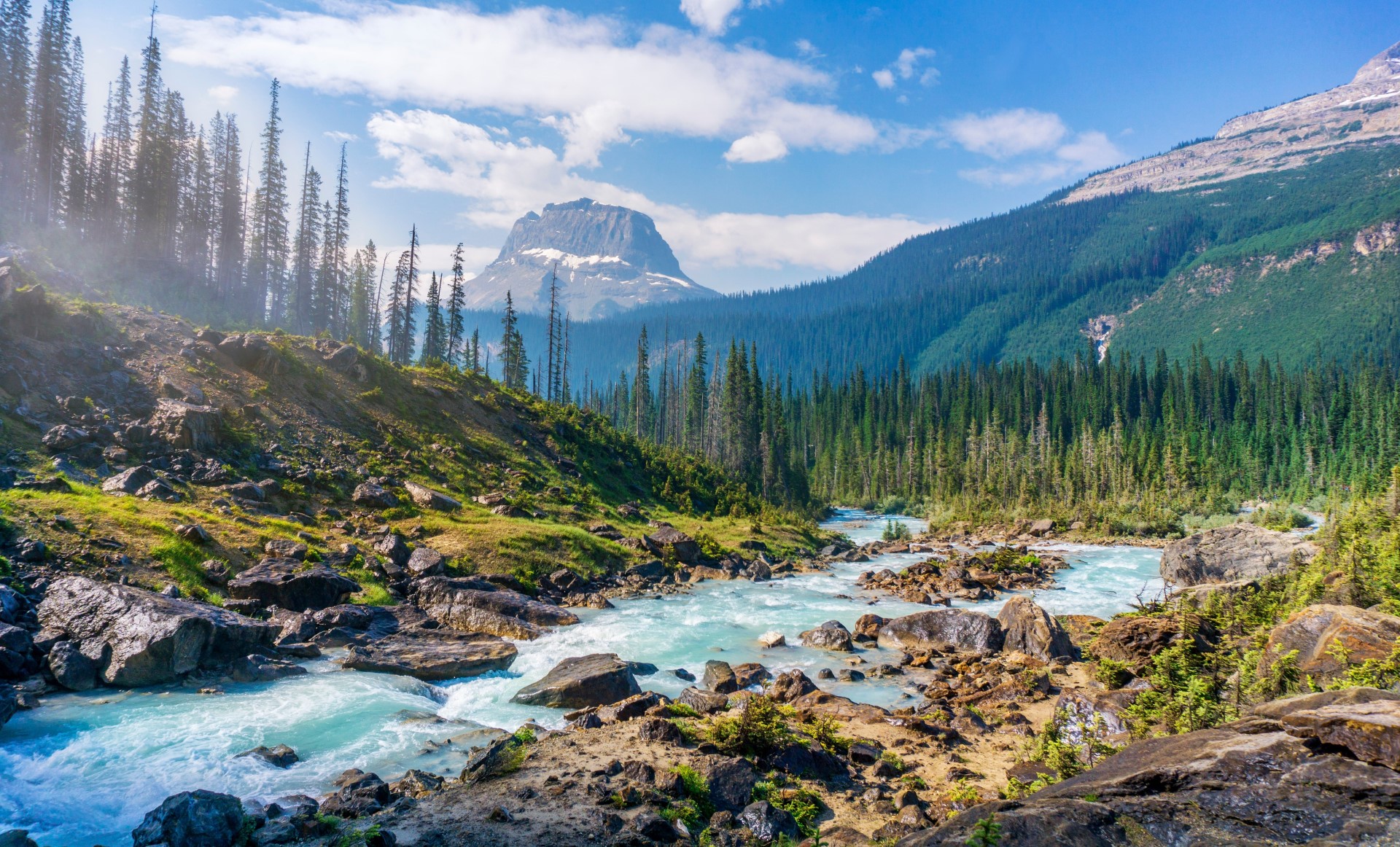
Sustainability is a buzzword we hear a lot, but do we truly understand what’s needed to preserve the health of urban and rural areas? Our interview with Keith Bowers provides a look at how we can move beyond a simple idea of sustainability, toward a truly rich ecology across our nation and the globe.
(Download a PDF version of the report to share with friends and colleagues for free)
Since our earliest days, we have felt a divide between human habitation and the Wild – a vast unknown that, for much of human history, was populated with monsters and nightmares too frightening to comprehend.
We create light where once was darkness, water where formerly the desert reigned, high walls where saber-toothed cats stalked at will. Our singular goal has been to fulfill an evolutionary mandate to keep our own species safe at all costs, even if that means railroading the other organisms with whom we share this planet and destroying the resources upon which they depend.
Today, we’re waking up to the fact that … come to think of it … we depend on those resources too, and it would be a real bummer if they were gone by our children’s or grandchildren’s generation. Even without such a strong motivator, preserving the Earth for its other inhabitants is, we can agree, the right thing to do.
Luckily for the rest of the human race, some forward thinkers spotted this issue years back. They have spent decades fighting against the negative impacts of profligacy and shortsighted development trends, and setting better ones in place.
Ecology has proven one of the most fruitful of these fields. Its sturdy relationship with other buzzwords – sustainability, resiliency, environmentalism – points to its importance, yet others might say it confuses the issue as well.
Keith Bowers is one of the latter.
Sustainability: What Is It, and Do We Have the Right Idea?
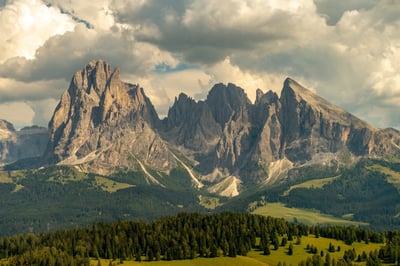 It’s safe to say that Bowers – whose handles include president of Biohabitats, landscape architect and restoration ecologist – knows what he’s talking about when he claims we need to get beyond simple sustainability.
It’s safe to say that Bowers – whose handles include president of Biohabitats, landscape architect and restoration ecologist – knows what he’s talking about when he claims we need to get beyond simple sustainability.
“For instance, we’re developing an urban ecology framework for the city of Atlanta,” he says. “It will play a vital role in terms of how people plan, design and execute in cities, which is fantastic. But the flip side of that is we need to look at increasing and reconnecting our wildlands and protected areas on a large regional scale. If we don’t provide that space for flora and fauna to prosper in the future, then we can do all the urban ecology we want in cities, but we’re going to fail.”
“We need to look at our wildlands and protected areas and increasing/connecting them on a large regional scale. If we don’t provide that space for flora and fauna to prosper in the future, then we can do all the urban ecology we want in cities, but we’re going to fail.”
~ Keith Bowers
 This hints at the fractured perception of “sustainability” touted today. Think about it: Chances are you’ve come across at least one reference to this idea in the past week. Perhaps it was on the bottom of your compostable fork at the neighborhood grocery store. Maybe it was on a flyer or a website. Possibly someone at your company made a casual reference to sustainable growth.
This hints at the fractured perception of “sustainability” touted today. Think about it: Chances are you’ve come across at least one reference to this idea in the past week. Perhaps it was on the bottom of your compostable fork at the neighborhood grocery store. Maybe it was on a flyer or a website. Possibly someone at your company made a casual reference to sustainable growth.
Yet are the products or activities to which the word is applied actually sustainable? After all, a system or process is not sustainable simply because it is made of a renewable resource or donates money toward saving the whales (although we are generally in favor of both, FYI).
A system or process is sustainable because it is within the carrying capacity of Earth, Bowers explains. As in, it won’t someday become unsustainable.
If you’re thinking “It’s sustainable because it won’t someday become unsustainable” seems a little tautological, that’s fair. But it’s also the truth. Any process that relies on future shoring up, accommodation, additional resources, habitat depletion or any other negative impact now or in the future just doesn’t cut the mustard.
A better way to think about it: We need our sustainable systems to be resilient, or able to accommodate change in future. Any system we build or develop that will need massive adjustment or propping up in response to natural or manmade changes is not resilient, and therefore, not sustainable.
We need our sustainable systems to be resilient, or able to accommodate change in future. Any system we build or develop that will need massive adjustment or propping up in response to natural or manmade changes is not resilient, and therefore, not sustainable.
Urban Ecology: A Solution Worth Fighting For
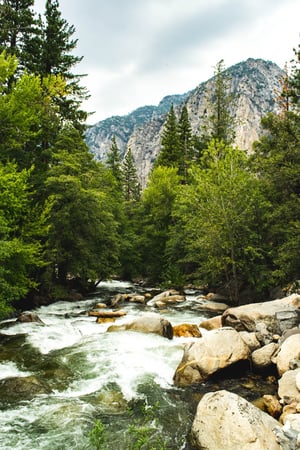 A lot of people are headed to the cities these days, with some estimates reflecting an influx of around 3 million people per week. [1]
A lot of people are headed to the cities these days, with some estimates reflecting an influx of around 3 million people per week. [1]
“Approximately 54% of people worldwide now live in cities, up from 30% in 1950,” summarizes Grayline Group. “There are currently 29 megacities with populations of over 10 million, up from 2 in 1950 and projected to grow to between 41 and 53 by 2030.”
Moreover, “A Yale research group projects that urban land coverage will expand by 463,000 square miles by 2030 to cover just under 10% of the planet’s land, equivalent to 20,000 football fields being paved over every day.”
Before you plan a Dan Brown Inferno-style sterilization of the human race, don’t panic: Our general trend toward urbanization over the last several hundred years is a good one, Bowers says. Packing in the people means leaving more space for organisms who cannot coexist with humans, like apex predators – think eagles, bears or wolves. For city-dwellers themselves, it also means:
- Greater productivity
- More resources
- Better education
- Higher quality of life
That’s assuming, of course, that we avail ourselves of the most recent trends toward urban ecology and ensure social justice, both of which we’ll discuss later on.
For now, this urbanizing trend leaves us with two main questions:
- How can you ensure urban areas are safe and healthy for the people who inhabit them?
- What can you do to ensure that rural and wild areas remain robust and resilient?
Let’s tackle these one at a time.
You Can Take a Person Out of Nature … and Then What?
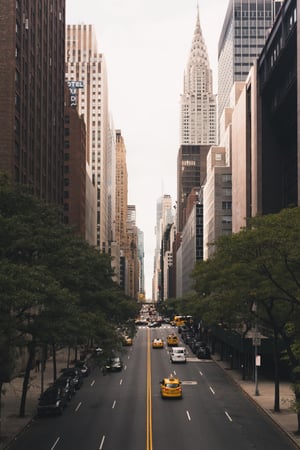 A wise company once asked, “You can take the person out of nature, but can you take nature out of the person?”
A wise company once asked, “You can take the person out of nature, but can you take nature out of the person?”
That company was us, just now. Lack of modesty aside, this is a critical question, because our human natures are largely responsible for the mess we’re in now. Profit-driven and shortsighted, we have developed models that prioritize bottom line over long-term vision and that reward short-term results for a few rather than long-term gain for many.
At Ecogardens, we’ve seen this ourselves. Sadly, now that green roofing has “caught on” in America, it’s a common enough sight to see companies simply rolling out a steroid-injected, sedum mat and crossing their fingers it survives. For obvious reasons, this is neither a sustainable nor a resilient system.
It’s important to note that the problem isn’t sedums themselves. In fact, as part of a thoughtfully designed and carefully stewarded ecosystem, they’re a strategic addition – a true workhorse of the green roofing world.
We need to take the time, however, to determine which plants work best for which environments. Ideally, we can use more indigenous species, but bottom line is they need to be adaptive. Otherwise you’ve spent time and money for nothing, and that’s not good.
We need to take the time to determine which plants work best for which environments. Ideally, we can use more indigenous species, but bottom line is they need to be adaptive. Otherwise you’ve spent time and money for nothing, and that’s not good.
 Therefore, the first step to ensuring cities comprise a healthy, sustainable and resilient ecological niche is educating people on what this really means. Which systems are viable, and which simply use more resources in the guise of “green”? What needs to happen to make our cities healthy centers of industry, productivity, entertainment and dynamism?
Therefore, the first step to ensuring cities comprise a healthy, sustainable and resilient ecological niche is educating people on what this really means. Which systems are viable, and which simply use more resources in the guise of “green”? What needs to happen to make our cities healthy centers of industry, productivity, entertainment and dynamism?
For one thing, we need to change our mindset when it comes to designing and implementing systems, be they water, energy, building or anything else.
Bowers likes to think of this as positive impact. This, he explains, is far better than the “net zero” term that is often bandied about, because rather than either creating or avoiding damage, the philosophy goes further and enables us to focus on creating good, even during normally disruptive activities such as development.
“This whole idea of sustainability is thinking about doing less harm,” he says, adding that this mindset is integral to the idea of regenerative design. “How can we take what we’re doing and regenerate ecosystems as well as our connection to nature and earth? That’s the mindset with which we go into projects to get beyond simple sustainability.”
"This whole idea of sustainability is thinking about doing less harm. How can we take what we’re doing and regenerate ecosystems as well as our connection to nature and earth? That’s the mindset with which we go into projects to get beyond simple sustainability."
~ KEITH BOWERS
One example is water: “Are there ways we can harvest, capture, reuse water while regenerating ecosystems at the same time?” In other words, instead of net zero, can we create a net positive?
It is also important that we ask, consistently, Who else lives here?
The surface on which we stand, whether it’s a ground-level park or a 50-story patio, sits on land that once belonged to birds, insects, mammals, plants, microorganisms and other non-human entities. We need to create spaces for them to eat, rest, reproduce, shelter and carry out the activities of daily life.
That’s still not enough, though. An urbanizing populace is all well and good, but we must also consider what happens in rural places when humans withdraw their presence.
What Happens to Nature When We Leave?
 We’re leaving rural areas for urban ones, but what happens to that land once we go?
We’re leaving rural areas for urban ones, but what happens to that land once we go?
Both goals – making cities healthier for humans and non-humans, and nature healthier for nature – require a firm understanding of ecological stewardship. In the latter case, the prospect is a bit daunting: giving nature back to nature, so that the organisms who need wild spaces can have them once more. This is known as rewilding.
“It is restoring natural processes and species, then stepping back so the land can express its own will,” explains Rewilding Earth. [2] “Rewilding often focuses on the apex predators – like wolves, great cats, crocodiles, sharks, and salmon — and other keystone species that tend to need wild space and be lost quickly in domesticated or exploited lands and waters.”
To overcome this necessitates restoration on scales that surpass those we typically envision. It’s not enough to return a 20-acre forest or wetland preserve to animals. These predators need huge territories, uninterrupted or minimally impacted by human habitations, activities or byproducts, such as pollutants and trash.
As the Cary Institute points out, “even the most rural sites exist within a matrix of human-induced ecological change, with rainfall in the country influenced by fossil fuel combustion in developed areas." [3]
So what happens to wild areas once we leave? Well, we’re still there, essentially. We have to do more than simply pack up and walk away; we have to play an active role in returning those lands, as much as possible, to the state they were in before we got there.
what happens to wild areas once we leave? Well, we’re still there, essentially. We have to do more than simply pack up and walk away; we have to play an active role in returning those lands, as much as possible, to the state they were in before we got there.
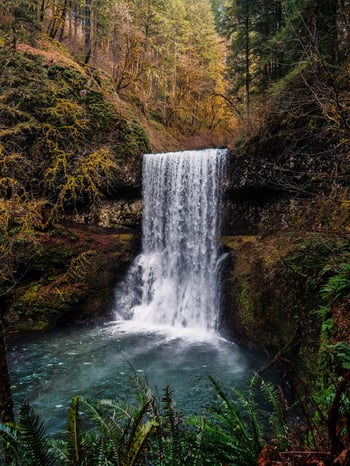 “Rewilding thus aims for restoration at a grand scale, the scale of conservation needed by wide-ranging species,” says Rewilding Earth.
“Rewilding thus aims for restoration at a grand scale, the scale of conservation needed by wide-ranging species,” says Rewilding Earth.
That’s a goal Biohabitats has taken very seriously.
“We’re working with many jurisdictions across the country, where we’re looking at watershed scale restoration,” Bowers says. “We’re looking at how can we reconnect forest, grasslands and other places to restore enough habitat to provide for wide-roaming and keystone species. That’s everything from projects in and around the coastline all the way up into the mountains and in the prairies, where we’re looking at wide expanses of area, applying the whole idea of landscape ecology to these areas to do that type of work.”
Both types of species are critical to think about. Keystone species, for instance, are those without whom that particular ecology would suffer or change completely. Wide-roaming species are those that need a lot of territory in which to flourish, especially apex predators.
Wildlands Network is one of the most prominent organizations working toward changes such as these. Currently, Biohabitats has a lot of its time and energy tied up with their efforts.
“They’re an organization that designs continental-scale re-wilding programs to reconnect regional landscapes,” Bowers says. “They’ve got blueprints out West called The Spine of the Continent, a way to rewild all the way from Mexico up to Canada, where they give grizzly bears, wolves and other species room to migrate.”
This isn’t just happening out West, however; Biohabitats and others like them are busy creating vast expanses of land to provide these same re-wilding benefits to the Midwest and East Coast as well.
Is It Possible to “Think Like a Watershed”?
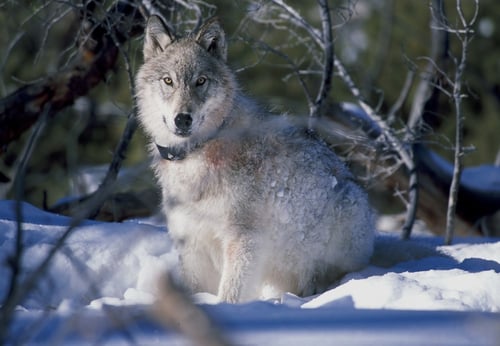 For proof that our cities and wild areas remain inextricably intertwined, we need look no further than watersheds.
For proof that our cities and wild areas remain inextricably intertwined, we need look no further than watersheds.
“While some watersheds are relatively small,” explains the National Ocean Service, “others encompass thousands of square miles and may contain streams, rivers, lakes, reservoirs, and underlying groundwater that are hundreds of miles inland." [4]
These sometimes-vast areas comprise all bodies of water not separated by ridgelines, flowing to make their eventual way to large collection areas – lakes, reservoirs – or to oceans. Cities within a watershed play a major role in its health, which is why we must “think like a watershed” if we are truly to create cities that interact harmlessly with nature – or better yet, as Bowers points out, have a net-positive effect.
“Cities are rethinking how they’re planning their infrastructure much more on a watershed scale,” says Bowers. “There’s a lot of work underway with stormwater management, especially in cities that have combined sewer systems.”
Combined sewer systems are a huge problem, because they must collect wastewater from homes and industrial areas, as well as stormwater. In high rain events, or when a lot of snow melt creates runoff in cities, the sewers can’t handle the load. They overflow, backing up into streets and pouring into waterways, carrying disease, pollutants and toxins with them, to the detriment of fish and wildlife.
 Luckily, says Bowers, “A lot of cities now are under EPA mandate to go back in and retrofit their sewer systems.” Even better, more municipal areas are asking important questions such as:
Luckily, says Bowers, “A lot of cities now are under EPA mandate to go back in and retrofit their sewer systems.” Even better, more municipal areas are asking important questions such as:
- What can we do as a watershed to begin addressing stormwater issues?
- Is there a way to capture and reuse rainwater to save on potable water use?
- How do we take that water and put it back in the ground to benefit ecosystems?
The way of the future, or at least one way of the future, is to manage water right onsite in urban areas to prevent wastewater from entering waterways at all. In Portland’s Lloyd District, for instance, Bowers et al. are experimenting with creating small “ecodistricts.”
He explains that they are “managing and treating wastewater on site, where it can be used as graywater for irrigation. There we’re looking at potable water, stormwater, wastewater, rain water, groundwater.”
Lloyd District is an important test case, its sustainability efforts shadowed across the country using many different approaches: green roofs, green infrastructure, biodiversity, transportation upgrades, urban ecology.
This last is getting more salient every day.
Can We Look Beyond Simple Sustainability Inside Cities as Well?
We must get past this idea that green infrastructure belongs only in affluent areas. Research shows that even when the city itself provides backing for green infrastructure, those dollars end up in wealthy areas – whereas chemicals and pollutants end up in impoverished ones.
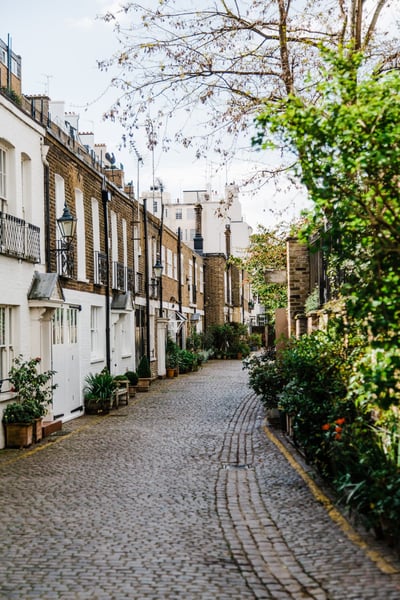 As greater numbers of people flock to cities, it becomes increasingly crucial that we account for human presence and activity, while stewarding species with which we can coexist.
As greater numbers of people flock to cities, it becomes increasingly crucial that we account for human presence and activity, while stewarding species with which we can coexist.
Unlike those apex predators, Bowers says, “there are many species that will use urban or semi-urban areas if we provide the right habitat and the right kind of connectivity. That can be easily done if it’s planned for upfront.”
We’re talking planting “native street trees that are a mix of both understory and overstory trees that provide a corridor for migratory birds, resident birds and pollinators.” Other tactics: using plants to remove contaminants from soil, protect from flooding, provide shade, modify the climate, moderate wind and sunlight, and provide cooling through evapotranspiration.
Moreover, we must get past this idea that green infrastructure belongs only in affluent areas. Research shows that even when the city itself provides backing for green infrastructure, those dollars end up in wealthy areas – whereas chemicals and pollutants end up in impoverished ones.
Turns out, sustainability and ecology are social justice issues as well.
So are we there yet? Probably not.
“These are living, breathing, dynamic systems,” Bowers points out. “They’re not static and not dead, so you have to manage them a different way. Your expectations have to be different. You have to adaptively manage these systems for the long haul. I don’t think really we’re there yet.”
But at least we’re getting closer, and the more people we invite to learn alongside us, the better.
How Can We Inspire Ecological Stewardship?
Ecological consciousness is wonderful, and even better when shared. But inspiring others to take a different approach to ecology is not as easy as one might think.
“That’s an ongoing struggle with us,” Bowers admits. When developers or builders refuse to look past the monetary value, it’s often hard to explain the worth of a different approach.
“What we find is that when we start talking about the benefits of green infrastructure or restoring ecosystems, we relate it back to how people experience the environment,” he explains. “Everything from cleaner air to cleaner water to healthy soils to modifying microclimate to reducing contaminants. We try to bring it back to show people that there are ecosystem benefits for them.”
"What we find is that when we start talking about the benefits of green infrastructure or restoring ecosystems, we relate it back to how people experience the environment. Everything from cleaner air to cleaner water to healthy soils to modifying microclimate to reducing contaminants. We try to bring it back to show people that there are ecosystem benefits for them."
~ KEITH BOWERS

Happily, Bowers and Biohabitats experience ever-greater success as their message, and those like it, begin to penetrate general consciousness and specific industry thinking. Today, they make dedicated efforts to educate as wide a variety of people as possible.
“Part of the inspiring and education we do is through conferences and workshops or affiliations,” he explains. “It also happens when working on a project where we get to interface with a builder or developer, and other allied design firms – others that may not have been exposed to the way of thinking we bring to the table. This gives us opportunities to educate both developers and design team.”
Those efforts are paying off, says Bowers.
“We’ve kind of gotten to the point now where in a lot of our work, we’re attracting builders and developers seeking to do something like that,” he says, “versus being inserted into a project and convincing someone to go that way. Then they go off and introduce another developer or builder that they’re working with, which acts as a web of influence.”
This highlights an important point for anyone working in the green industry: It’s critical to share what we know with as many people as possible, through as many channels as possible. For those looking to benefit from the knowledge of others, getting hooked in to those channels through conferences or workshops is a great way to go.
To learn more about Keith Bowers and Biohabitats, please visit their site today. Check out their work and read more about them to stay on the cutting edge of green infrastructure today.
--
[1] Bret Boyd, “Urbanization and the Mass Movement of People to Cities,” Grayline, accessed September 23, 2018, https://graylinegroup.com/urbanization-catalyst-overview/.
[2] John David, “Rewilding Distilled,” Rewilding Earth, accessed September 18, 2018, https://rewilding.org/rewilding-distilled/.
[3] “Baltimore Ecosystem Study,” Cary Institute of Ecosystem Studies, accessed September 22, 2018, https://www.caryinstitute.org/science-program/research-projects/baltimore-ecosystem-study.
[4] “What Is a Watershed?” National Ocean Service, accessed September 23, 2018, https://oceanservice.noaa.gov/facts/watershed.html.
